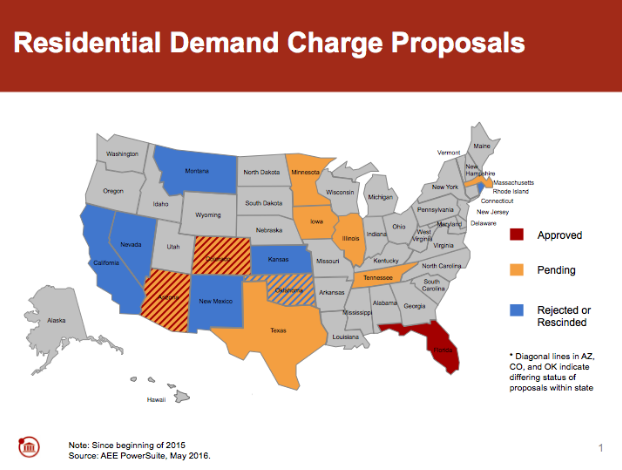This post was originally published on SmartGridNews. Read it in full by clicking here.

The rise in customer-sited distributed generation (DG) and the success of energy efficiency (EE) programs in reducing load growth have brought rate design to the fore as utilities look for ways to ensure cost recovery and reduce risk. The large uptick in fixed charge proposals has continued as a result, but now a new trend toward a more sophisticated rate design has emerged - demand charges. Demand charges, the argument goes, are intended to better align revenue collection with cost and provide a strong incentive for customers to reduce their peak consumption. But do they really make sense for residential customers?
Large commercial and industrial customers have long been subject to demand charges, which date back to the 1890s. The inventor of the demand meter, Arthur Wright, found that by charging for the maximum amount of instantaneous demand (kW) as well as the total consumption over time (kWh) he could get customers to spread out their usage and reduce the capacity needs of the system, which helps reduce system costs overall.
These demand charges, which are still used today, are typically based on a customer’s highest usage during each billing cycle. This charge, referred to as a non-coincident demand charge, generally makes sense for large commercial and industrial customers because their individual peaks often coincide with the system peak, such that the customer’s demand requirements actually align with costs borne by the utility (which are largely related to capacity). However, detractors question whether this rationale applies to residential customers, whose maximum demand rarely matches up with the system peak. Residential customers have a wide variety of load profiles, such that residential usage overall tends to have a smoothing effect on the demand curve. As a result, the non-coincident peak demand of a typical residential customer tends to unfairly allocate costs to customers with erratic loads and is not a good indicator of that customer’s contribution to utility costs.
That is only the beginning of the debate, however. Read the full post by our analyst over at SmartGridNews.